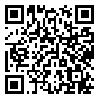Volume 2, Issue 6 (11-2012)
2012, 2(6): 109-120 |
Back to browse issues page
Download citation:
BibTeX | RIS | EndNote | Medlars | ProCite | Reference Manager | RefWorks
Send citation to:



BibTeX | RIS | EndNote | Medlars | ProCite | Reference Manager | RefWorks
Send citation to:
Torabi B, Soltani A. Quantifying Response of Chickpea Emergence to Air Temperature. Journal of Crop Production and Processing 2012; 2 (6) :109-120
URL: http://jcpp.iut.ac.ir/article-1-1740-en.html
URL: http://jcpp.iut.ac.ir/article-1-1740-en.html
Dept. of Agron., Vali-e- Asr Univ. of Rafsanjan, Rafsanjan, Iran. , ben_torabi@yahoo.com
Abstract: (9742 Views)
This study was conducted to evaluate the response of emergence to temperature in 4 chickpea cultivars (Beauvanij, Arman, Hashem and Jam) using 12 sowing dates (one per month) under Gorgan environmental conditions (northern Iran) in 2001-2002 and 2002-2003. A dent-like function was used to quantify the response of emergence to temperature. Using this function, the cardinal temperatures (base, lower optimum and higher optimum) and biological day requirement for emergence were determined for different percentiles. Ceiling temperature was taken constantly as
39 ˚C. There was no significant difference between cultivars for cardinal temperatures of 50% population and they were estimated as 4.5, 20.2 and 29.0 ˚C, respectively. Base temperature of 3.4 and 3.0 ˚C, lower optimum of 23.8 and 20 ˚C and higher optimum of 30.3 and 30.0 ˚C were estimated for 10 and 90% populations without significant difference between cultivars. Cultivar differences for biological day requirement of emergence were not significant for 10, 50 and 90% populations. Biological day requirement was estimated as 4.4, 6.1 and 7.9 days for 10, 50 and 90% populations, respectively. Chickpea emergence could be predicted for different percentiles using estimated parameters of this study and weather data.
Type of Study: Applicable |
Subject:
General
Send email to the article author
| Rights and permissions | |
 | This work is licensed under a Creative Commons Attribution-NonCommercial 4.0 International License. |






